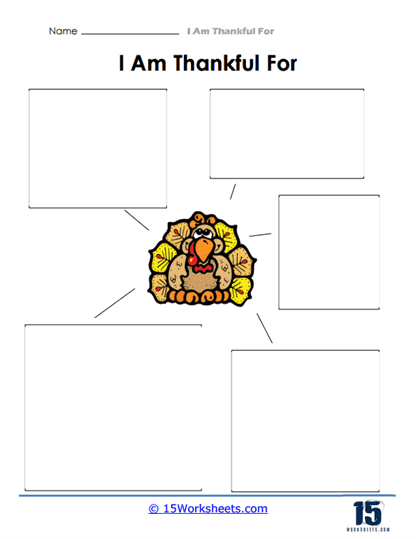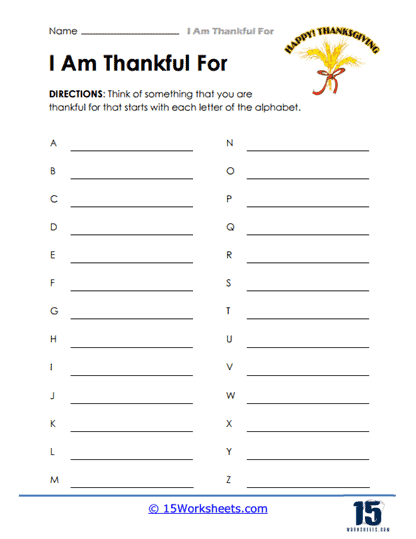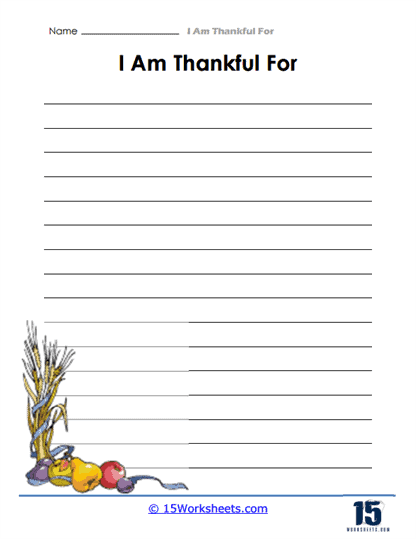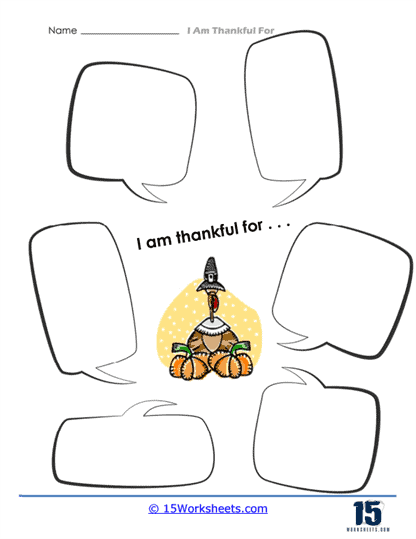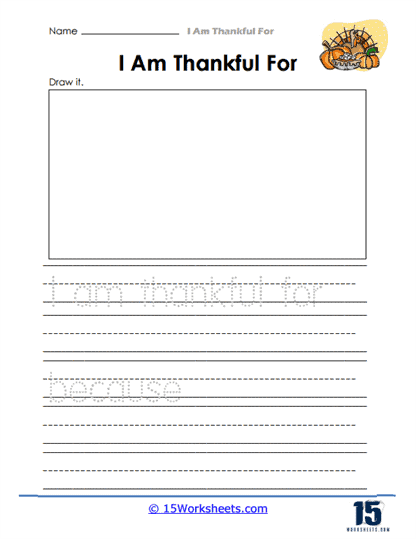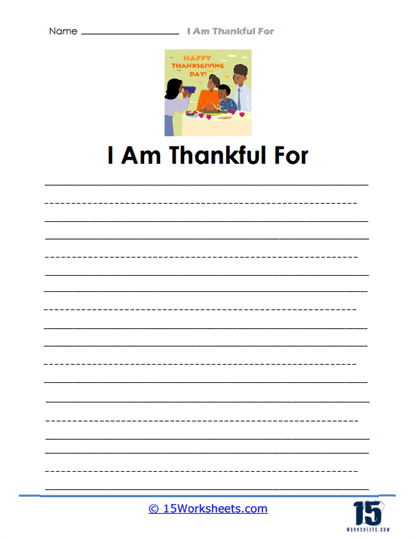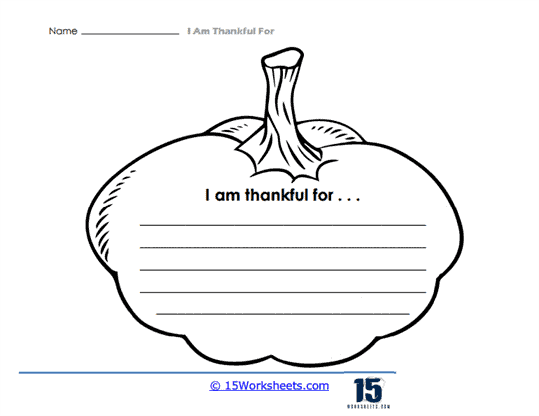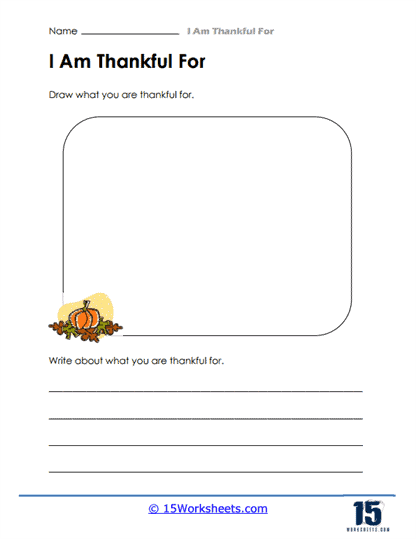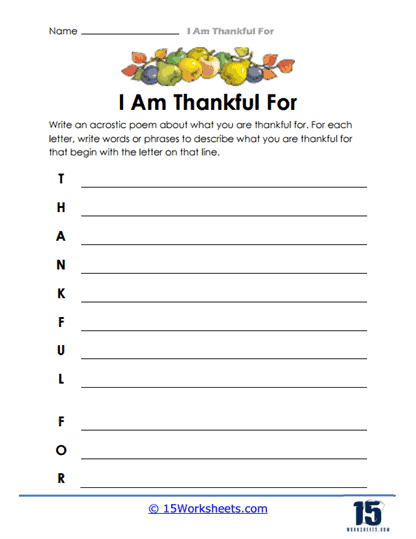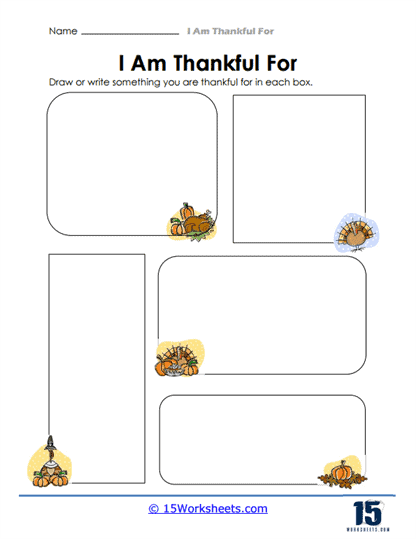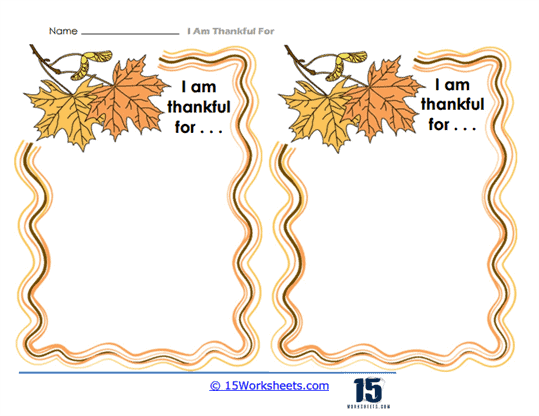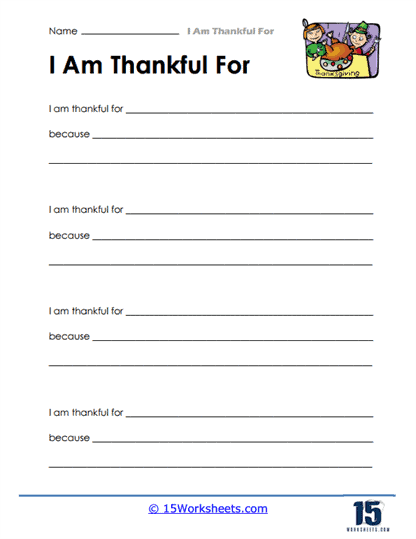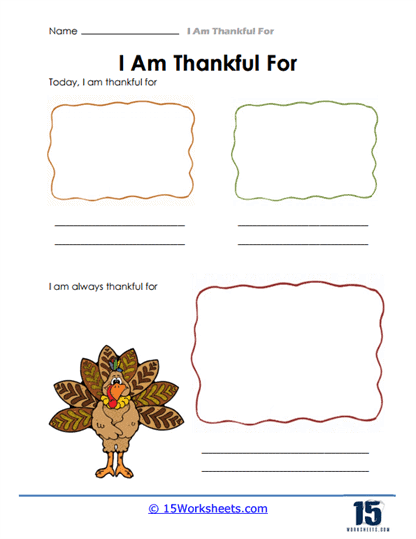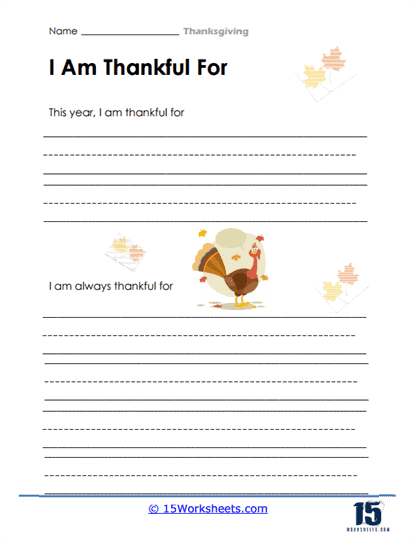I Am Thankful For Worksheets
About These 15 Worksheets
These selection of writing worksheets can foster gratitude, reflection, and personal expression among students. These worksheets offer a structured way for individuals, particularly children, to contemplate and articulate the aspects of their lives for which they feel thankful. Through various types of exercises, these worksheets not only encourage a positive mindset but also significantly enhance writing and reasoning skills. Let’s explore the different exercises found on these worksheets and how they contribute to educational development.
These worksheets are much more than simple exercises in gratitude. They are comprehensive educational tools that nurture emotional intelligence, creativity, and critical thinking. Through a variety of exercises, these worksheets encourage students to explore and express their thankfulness, significantly enhancing their writing and reasoning abilities in the process. Engaging with these worksheets regularly can lead to a more positive outlook on life, improved writing skills, and a deeper capacity for reflection and empathy, laying a solid foundation for personal and academic growth.
Types of Exercises
1. List Making
A common exercise is to list items, people, or experiences for which the student is thankful. This straightforward activity requires students to reflect on their personal life and identify specific elements that bring them joy or comfort. It’s a stepping stone for beginners in gratitude practice and helps in organizing thoughts clearly.
2. Sentence Completion
This exercise provides students with partially completed sentences that they must finish, such as “I am thankful for my family because…”. This prompts deeper thinking about the reasons behind their gratitude, fostering both critical thinking and self-awareness.
3. Paragraph Writing
More advanced worksheets may ask students to write a paragraph or more about something they are thankful for. This encourages students to elaborate on their thoughts, providing reasons and explaining the context of their gratitude. It’s an excellent way to enhance descriptive writing and narrative skills.
4. Gratitude Journaling
Some worksheets introduce the concept of gratitude journaling, where students write daily or weekly entries about things they’re thankful for. This ongoing practice helps in recognizing the good in everyday life, developing a habit of reflection and positivity.
5. Art Integration
Worksheets often include sections where students can draw or color something they’re thankful for. This visual expression allows for creativity and can be particularly engaging for visual learners or younger students, making the concept of gratitude more tangible.
6. Thankfulness Tree
In this creative exercise, students fill out leaves with things they’re thankful for and attach them to a tree drawing. It’s a visual and interactive way to appreciate the abundance of positive aspects in life, enhancing both creativity and gratitude.
7. Interview and Share
Some worksheets encourage students to interview peers or family members about what they’re thankful for and then share these findings with the class. This exercise builds communication skills and fosters a sense of community and empathy.
Impact on Writing and Reasoning Skills
Practicing with “I Am Thankful For” worksheets can significantly improve students’ writing and reasoning skills in several ways:
1. Enhanced Expressive Ability
Regularly articulating gratitude helps students refine their ability to express complex emotions and thoughts in writing. As they describe why they’re thankful for something, they learn to convey their feelings more effectively, enhancing their expressive writing skills.
2. Improved Descriptive Writing
Describing why they’re grateful for something requires attention to detail and the ability to paint a picture with words. This practice naturally improves descriptive writing skills, as students learn to use vivid language and sensory details to bring their gratitude to life.
3. Critical Thinking and Reflection
Analyzing the reasons behind their gratitude encourages deep reflection and critical thinking. Students learn to connect their feelings of thankfulness to broader concepts, such as relationships, community, and personal growth, fostering a more profound understanding of their experiences and emotions.
4. Organizational Skills
Organizing thoughts in a coherent manner is a crucial part of writing. By structuring their gratitude into lists, paragraphs, or journals, students practice organizing their ideas logically, which is a fundamental skill in writing and reasoning.
5. Empathy and Perspective-Taking
Understanding and articulating why they’re thankful can help students develop empathy and the ability to see situations from others’ perspectives. These critical reasoning skills are essential in all forms of communication and interaction.
6. Habit of Reflection
The regular practice of identifying and writing about gratitude instills a habit of reflection. Reflective thinking is a critical component of reasoning, enabling students to evaluate their experiences and beliefs critically and thoughtfully.

